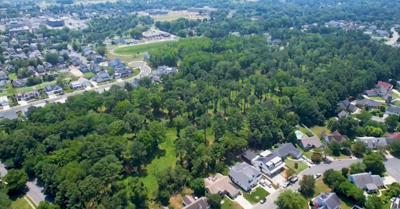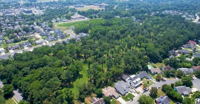LEWES, Del. — A major conservation effort in the heart of Lewes has reached a key milestone. The $8 million needed to purchase the Fourth St. Preserve has officially been raised, three months ahead of the acquisition deadline.
The 30-acre forested site, the first land ever deeded in Lewes in 1670, is now set to be owned by the City of Lewes, thanks to a campaign spearheaded by the Greater Lewes Foundation. The fundraising effort was led by campaign chair Jim Ford and campaign director Pam Costanzi, both of whom volunteered their time for more than two years.
“With the property acquisition a certainty, the Preserve project is half-way toward becoming a reality,” Ford said. “Additional donations will still be needed for settlement expenses and the costs to implement the Preserve’s new Master Plan.”
That restoration plan includes new trails, ditch crossings, interpretive signage, native plantings and a specially engineered wetland at the east end of the property. The Master Plan was designed by Rodney Robinson, who will oversee the implementation alongside city leaders.
Mayor Amy Marasco called the purchase a testament to the city’s values. “At a time when natural resources are disappearing, our entire community came together to save this rare forest sanctuary,” she said.
Ford explained that funding came from a combination of public and private sources. The City of Lewes made an early $1 million commitment, which was matched by the Longwood Foundation. Additional contributions included $3.2 million from the state and Delaware Open Space Council, and $2.8 million from more than 1,300 donations by people and businesses in Lewes.
Costanzi credited the community’s enthusiasm as a key driver for the campaign’s success. “Their level of support and enthusiasm has been a primary factor in our ability to raise additional state and foundation grants,” she said.
Once settlement is finalized, the land will be held under a conservation easement managed by the Delaware Department of Agriculture and monitored by the Delaware Forest Service. The Forest Service plans to use the preserve as a model for encouraging urban forests across Sussex County.
Restoration efforts are expected to span several years. Robinson said students, naturalists and visitors will be able to observe the transformation as hundreds of native trees and plants are reintroduced. Lewes’s own Master Naturalist group will also play an ongoing role in maintaining the Preserve.
Joe Stewart, chair of the Greater Lewes Foundation, compared this successful campaign to earlier city partnerships on Canalfront Park, the public library, trailhead, and other conservation projects.
Ford said upcoming fundraising will focus on restoration costs. “The amount needed will be far less than the acquisition cost,” he said, “and everyone we’ve spoken with is eager to help.”







